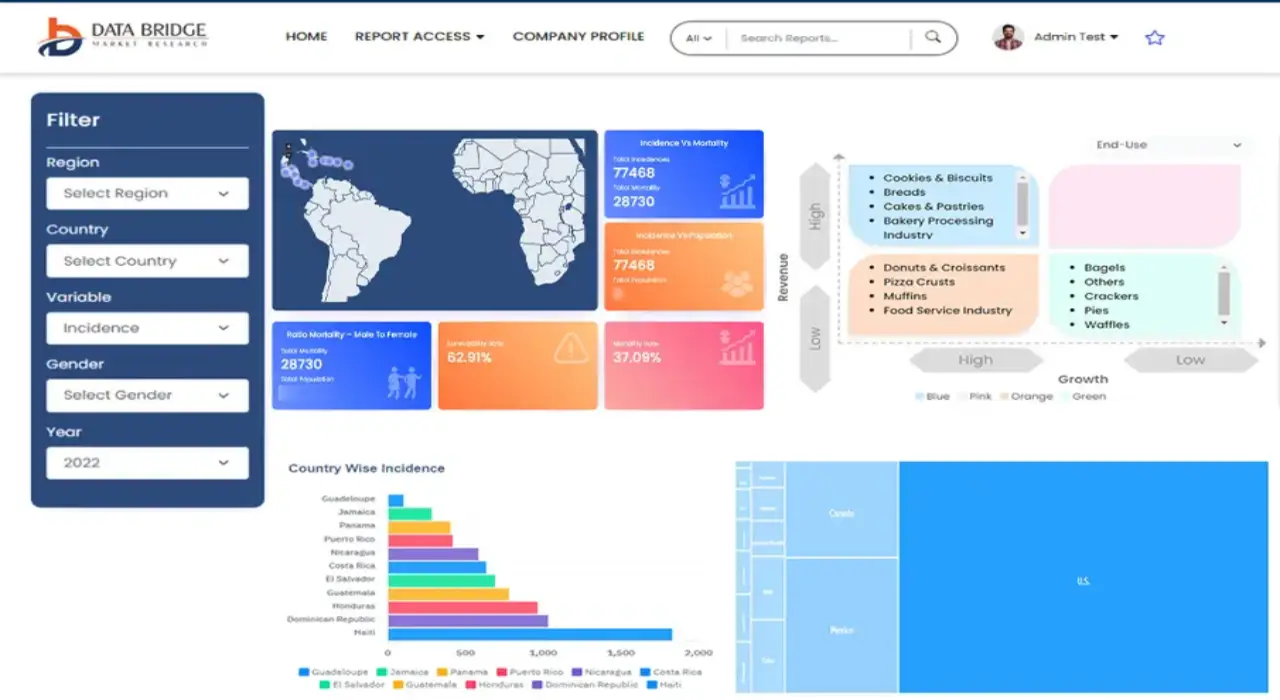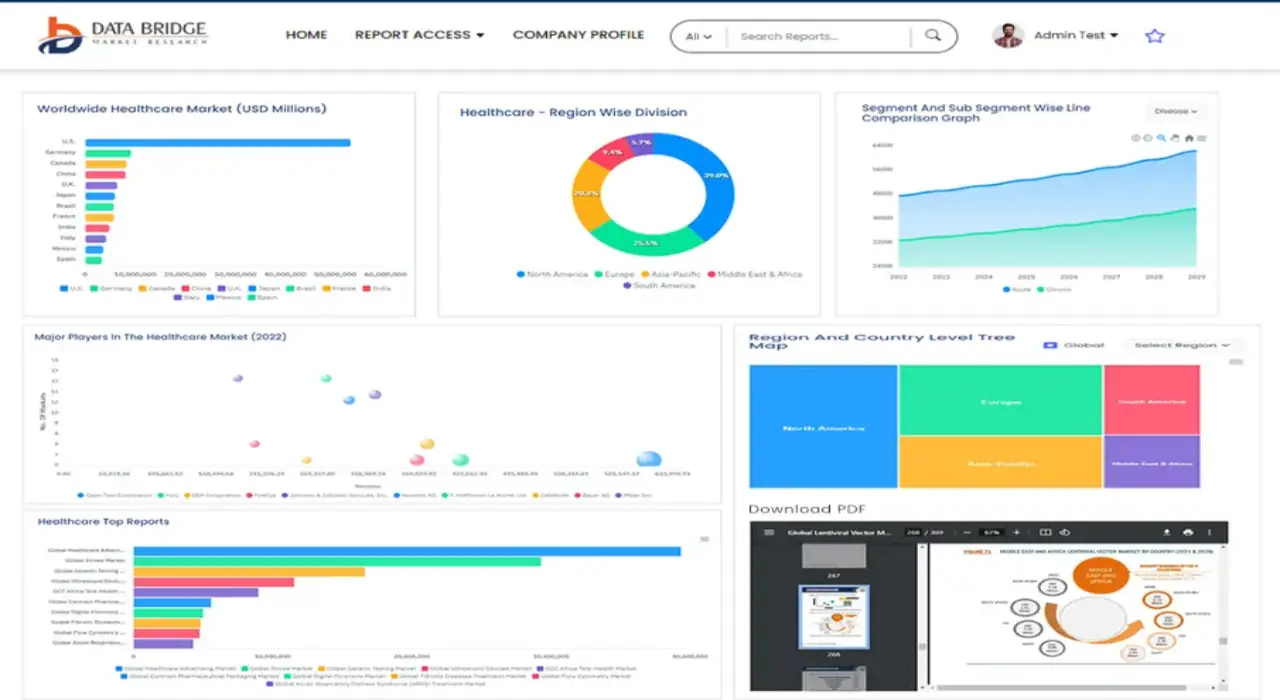>Global Brain Monitoring Devices, By Product (Electroencephalography (EEG) Devices, Magnetoencephalography (MEG) Devices, Transcranial Doppler (TCD) Devices, Intracranial Pressure (ICP) Monitors, Cerebral Oximeters, Magnetic Resonance Imaging (MRI) Devices, Computerized Tomography (CT) Devices, Positron Emission Tomography (PET) Devices, Sleep Monitoring Devices, Electromyography (EMG) Devices and Accessories), Procedure (Invasive and Non-invasive), Application (Epilepsy, Dementia, Parkinson's Disease, Huntington's Disease, Headache Disorders, Stroke, Traumatic Brain Injuries, Sleep Disorders and Other Diseases) – Industry Trends and Forecast to 2030.
Brain Monitoring Devices Analysis and Size
Brain monitoring devices are utilized to monitor and diagnose abnormal activities in the brain. Brain monitoring devices help in monitoring electrical and neural activity in the brain. In addition, they assist in monitoring the blood flow in the veins and arteries situated in the brain. Major factors that are expected to boost the growth of the brain monitoring devices market in the forecast period are the shift in the lifestyle.
Data Bridge Market Research analyses that the global brain monitoring devices which was USD 6,184.12 million in 2022, is expected to reach USD 8,315.12 million by 2030, and is expected to undergo a CAGR of 7.7% during the forecast period of 2023 to 2030. “Electroencephalography (EEG) Devices” dominates the product segment of the global brain monitoring devices due to increasing incidence of traumatic brain injuries. In addition to the insights on market scenarios such as market value, growth rate, segmentation, geographical coverage, and major players, the market reports curated by the Data Bridge Market Research also include depth expert analysis, patient epidemiology, pipeline analysis, pricing analysis, and regulatory framework.
Brain Monitoring Devices Scope and Segmentation
|
Report Metric |
Details |
|
Forecast Period |
2023 to 2030 |
|
Base Year |
2022 |
|
Historic Years |
2021 (Customizable to 2015-2020) |
|
Quantitative Units |
Revenue in USD Million, Volumes in Units, Pricing in USD |
|
Segments Covered |
Product (Electroencephalography (EEG) Devices, Magnetoencephalography (MEG) Devices, Transcranial Doppler (TCD) Devices, Intracranial Pressure (ICP) Monitors, Cerebral Oximeters, Magnetic Resonance Imaging (MRI) Devices, Computerized Tomography (CT) Devices, Positron Emission Tomography (PET) Devices, Sleep Monitoring Devices, Electromyography (EMG) Devices and Accessories), Procedure (Invasive and Non-invasive), Application (Epilepsy, Dementia, Parkinson's Disease, Huntington's Disease, Headache Disorders, Stroke, Traumatic Brain Injuries, Sleep Disorders and Other Diseases) |
|
Countries Covered |
U.S., Canada and Mexico in North America, Germany, France, U.K., Netherlands, Switzerland, Belgium, Russia, Italy, Spain, Turkey, Rest of Europe in Europe, China, Japan, India, South Korea, Singapore, Malaysia, Australia, Thailand, Indonesia, Philippines, Rest of Asia-Pacific (APAC) in the Asia-Pacific (APAC), Saudi Arabia, U.A.E., South Africa, Egypt, Israel, Rest of Middle East and Africa (MEA) as a part of Middle East and Africa (MEA), Brazil, Argentina and Rest of South America as part of South America |
|
Market Players Covered |
NIHON KOHDEN CORPORATION (Japan), Koninklijke Philips N.V. (Netherlands), GENERAL ELECTRIC COMPANY (U.S.), Siemens Healthcare Private Limited (Germany), Natus Medical Incorporated (U.S.), Compumedics Limited (Australia), Electrical Geodesics, Inc (U.S.), CAS Medical Systems Inc (U.S.), Advanced Brain Monitoring (U.S.), B. Braun Medical (Germany), BD (U.S.), DePuySynthes Companies (U.S.), Cadwell Industries, Inc. (U.S.), Masimo Corporation (U.S.), Elekta AB (Sweden), Integra LifeSciences Corporation (U.S.), Rimed Inc. (Israel), Yokogawa Electric Corporation (Japan), EMOTIV Inc. (U.S.) |
|
Market Opportunities |
|
Market Definition
Brain monitoring devices market encompasses a wide range of medical devices and equipment designed to monitor various aspects of brain function. These devices are utilized across a spectrum of clinical and research settings to observe and analyze neural activity, helping healthcare professionals diagnose and manage neurological conditions, assess brain health, and conduct research into brain-related disorders.
Global Brain Monitoring Devices Dynamics
Drivers
- Rising Prevalence of Neurological Disorders
The global burden of neurological disorders, including epilepsy, Alzheimer's disease, Parkinson's disease, and stroke, is on the rise. This escalating prevalence of neurological conditions necessitates effective diagnostic and monitoring tools, driving the demand for brain monitoring devices. To address this driver, manufacturers focus on developing devices that enhance diagnostic accuracy and provide real-time data for managing neurological disorders.
- Advancements in Neuroimaging Techniques
The field of neuroimaging has witnessed remarkable technological advancements, including functional MRI (fMRI), PET scans, and magnetoencephalography (MEG). These innovations enable more precise and non-invasive monitoring of brain function and structure.
- Increasing Research in Neuroscience
Neuroscience research continues to expand, driven by growing interest in understanding the brain's complexities. This increased focus on brain-related research creates a demand for sophisticated monitoring devices capable of collecting precise data for studies in neurology, psychiatry, and cognitive science. To leverage this driver, manufacturers collaborate with research institutions and provide specialized monitoring solutions tailored to the needs of neuroscientists.
Opportunities
- Telemedicine and Remote Monitoring
The integration of brain monitoring devices with telemedicine platforms presents a significant opportunity. Telemedicine allows for remote monitoring of patients' brain health, enabling healthcare providers to assess and diagnose neurological conditions without physical presence. To capitalize on this opportunity, companies work on device connectivity and compatibility with telehealth systems.
- Personalized Medicine for Brain Monitoring Device
The concept of personalized medicine is gaining momentum, and brain monitoring devices play a crucial role in tailoring treatment plans for individuals with neurological disorders. Personalized monitoring can lead to more effective interventions and improved patient outcomes. To harness this opportunity, manufacturers invest in data analytics and machine learning capabilities to interpret patient-specific data.
Restraints/Challenges
- High Costs of Brain Monitoring Devices
Advanced brain monitoring devices often come with a significant price tag, limiting their accessibility to healthcare facilities with substantial budgets. The high cost of these devices can be a major restraint, especially in resource-constrained regions. To address this restraint, manufacturers work on cost-efficient designs and explore opportunities for collaborations and subsidies.
- Complex Regulatory Pathways
The development and commercialization of medical devices, including brain monitoring devices, involve navigating complex regulatory pathways and obtaining approvals from health authorities. These regulatory hurdles can slow down the introduction of new products to the market. To mitigate this restraint, manufacturers invest in regulatory affairs expertise and engage in transparent communication with regulatory agencies.
This global brain monitoring devices report provides details of new recent developments, trade regulations, import-export analysis, production analysis, value chain optimization, market share, impact of domestic and localized market players, analyses opportunities in terms of emerging revenue pockets, changes in market regulations, strategic market growth analysis, market size, category market growths, application niches and dominance, product approvals, product launches, geographic expansions, technological innovations in the market. To gain more info on the global Brain Monitoring Devices Contact Data Bridge Market Research for an Analyst Brief, our team will help you take an informed market decision to achieve market growth.
Recent Development
- In March 2022, brain.space, an Israel-based company, developed a wireless EEG device that provides superior readings to traditional ones and can be set up without expert help. The cost-effectiveness and ease of use of this device are expected to attract significant attention in the coming years
Global Brain Monitoring Devices Scope
The global brain monitoring devices is segmented on the basis of product, procedure and application. The growth amongst these segments will help you analyse meagre growth segments in the industries and provide the users with a valuable market overview and market insights to help them make strategic decisions for identifying core market applications.
Product
- Electroencephalography (EEG) Devices
- Magnetoencephalography (MEG) Devices
- Transcranial Doppler (TCD) Devices
- Intracranial Pressure (ICP) Monitors
- Cerebral Oximeters
- Magnetic Resonance Imaging (MRI) Devices
- Computerized Tomography (CT) Devices
- Positron Emission Tomography (PET) Devices
- Sleep Monitoring Devices
- Electromyography (EMG) Devices
- Accessories
Procedure
- Invasive
- Non-invasive
Application
- Epilepsy
- Dementia
- Parkinson's Disease
- Huntington's Disease
- Headache Disorders
- Stroke
- Traumatic Brain Injuries
- Sleep Disorders
- Other Diseases
Global Brain Monitoring Devices Regional Analysis/Insights
The global brain monitoring devices is analysed and market size insights and trends are provided by product, procedure and application as referenced above.
The countries covered in the global brain monitoring devices report are U.S., Canada and Mexico, Germany, France, U.K., Netherlands, Switzerland, Belgium, Russia, Italy, Spain, Turkey, Rest of Europe in Europe, China, Japan, India, South Korea, Singapore, Malaysia, Australia, Thailand, Indonesia, Philippines, Rest of Asia-Pacific (APAC) in the Asia-Pacific (APAC), Saudi Arabia, U.A.E., South Africa, Egypt, Israel, Rest of Middle East and Africa (MEA) as a part of Middle East and Africa (MEA), Brazil, Argentina and Rest of South America as part of South America
North America dominates the global brain monitoring devices in terms of market share and market revenue and will continue to flourish its dominance during the forecast period of 2023 to 2030, due of the increase in the expenditure for research and development proficiencies, increasing government’s initiatives and improved health care infrastructure in various countries.
Asia-Pacific on the other hand is projected to exhibit the highest growth rate in the global brain monitoring devices during the forecast period of 2023 to 2030 owing to the increasing government expenditure on healthcare sector and rising technological advancements and initiatives by the government.
The country section of the report also provides individual market impacting factors and changes in regulation in the market domestically that impacts the current and future trends of the market. Data points such as down-stream and up-stream value chain analysis, technical trends and porter's five forces analysis, case studies are some of the pointers used to forecast the market scenario for individual countries. Also, the presence and availability of global brands and their challenges faced due to large or scarce competition from local and domestic brands, impact of domestic tariffs and trade routes are considered while providing forecast analysis of the country data.
Healthcare Infrastructure Growth Installed Base and New Technology Penetration
The global brain monitoring devices also provides you with detailed market analysis for every country growth in healthcare expenditure for capital equipment, installed base of different kind of products for global brain monitoring devices, impact of technology using life line curves and changes in healthcare regulatory scenarios and their impact on the global brain monitoring devices. The data is available for historic period 2015 to 2020.
Competitive Landscape and Global Brain Monitoring Devices Share Analysis
The global brain monitoring devices competitive landscape provides details by competitor. Details included are company overview, company financials, revenue generated, market potential, investment in research and development, new market initiatives, global presence, production sites and facilities, production capacities, company strengths and weaknesses, product launch, product width and breadth, application dominance. The above data points provided are only related to the company's focus related to global brain monitoring devices.
Some of the major players operating in the global brain monitoring devices are:
- NIHON KOHDEN CORPORATION (Japan)
- Koninklijke Philips N.V. (Netherlands)
- GENERAL ELECTRIC COMPANY (U.S.)
- Siemens Healthcare Private Limited (Germany)
- Natus Medical Incorporated (U.S.)
- Compumedics Limited (Australia)
- Electrical Geodesics, Inc (U.S.)
- CAS Medical Systems Inc (U.S.)
- Advanced Brain Monitoring (U.S.)
- B. Braun Medical (Germany)
- BD (U.S.)
- DePuySynthes Companies (U.S.)
- Cadwell Industries, Inc. (U.S.)
- Masimo Corporation (U.S.)
- Elekta AB (Sweden)
- Integra LifeSciences Corporation (U.S.)
- Rimed Inc. (Israel)
- Yokogawa Electric Corporation (Japan)
- EMOTIV Inc. (U.S.)
SKU-
Get online access to the report on the World's First Market Intelligence Cloud
- Интерактивная панель анализа данных
- Панель анализа компании для возможностей с высоким потенциалом роста
- Доступ аналитика-исследователя для настройки и запросов
- Анализ конкурентов с помощью интерактивной панели
- Последние новости, обновления и анализ тенденций
- Используйте возможности сравнительного анализа для комплексного отслеживания конкурентов
Методология исследования
Сбор данных и анализ базового года выполняются с использованием модулей сбора данных с большими размерами выборки. Этап включает получение рыночной информации или связанных данных из различных источников и стратегий. Он включает изучение и планирование всех данных, полученных из прошлого заранее. Он также охватывает изучение несоответствий информации, наблюдаемых в различных источниках информации. Рыночные данные анализируются и оцениваются с использованием статистических и последовательных моделей рынка. Кроме того, анализ доли рынка и анализ ключевых тенденций являются основными факторами успеха в отчете о рынке. Чтобы узнать больше, пожалуйста, запросите звонок аналитика или оставьте свой запрос.
Ключевой методологией исследования, используемой исследовательской группой DBMR, является триангуляция данных, которая включает в себя интеллектуальный анализ данных, анализ влияния переменных данных на рынок и первичную (отраслевую экспертную) проверку. Модели данных включают сетку позиционирования поставщиков, анализ временной линии рынка, обзор рынка и руководство, сетку позиционирования компании, патентный анализ, анализ цен, анализ доли рынка компании, стандарты измерения, глобальный и региональный анализ и анализ доли поставщика. Чтобы узнать больше о методологии исследования, отправьте запрос, чтобы поговорить с нашими отраслевыми экспертами.
Доступна настройка
Data Bridge Market Research является лидером в области передовых формативных исследований. Мы гордимся тем, что предоставляем нашим существующим и новым клиентам данные и анализ, которые соответствуют и подходят их целям. Отчет можно настроить, включив в него анализ ценовых тенденций целевых брендов, понимание рынка для дополнительных стран (запросите список стран), данные о результатах клинических испытаний, обзор литературы, обновленный анализ рынка и продуктовой базы. Анализ рынка целевых конкурентов можно проанализировать от анализа на основе технологий до стратегий портфеля рынка. Мы можем добавить столько конкурентов, о которых вам нужны данные в нужном вам формате и стиле данных. Наша команда аналитиков также может предоставить вам данные в сырых файлах Excel, сводных таблицах (книга фактов) или помочь вам в создании презентаций из наборов данных, доступных в отчете.















